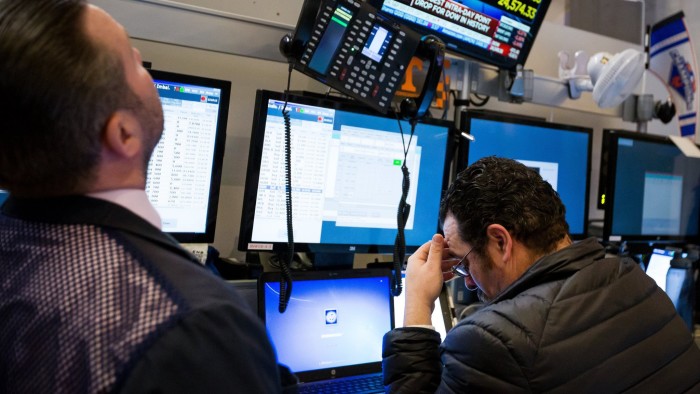US distressed debt flashes warning sign for investors

Roula Khalaf, Editor of the FT, selects her favourite stories in this weekly newsletter.
Investors are pulling back from the riskiest parts of the US corporate bond market, fearing that a brightening domestic economy may not be enough to save hundreds of companies struggling under heavy debt burdens.
Corporate bond markets have enjoyed a big rally this year, buoyed by a trio of interest rate cuts from the Federal Reserve and by signs that the world’s largest economy is on a solid footing. An index of junk-rated debt run by Ice Data Services has returned almost 12 per cent this year, as bullish fund managers look lower down the credit spectrum in pursuit of income.
But in those furthest reaches there are signs of strain. More than 200 of the bonds in the Ice index are trading with yields more than 10 percentage points above equivalent government bonds — a commonly used definition of distress. That share now stands at 11.6 per cent of the index, the highest proportion since 2016.
“Beneath the surface of what looks like . . . an enthusiasm for taking credit risk, there is a consciousness that all is not rosy,” said Marty Fridson, chief investment officer of Lehmann Livian Fridson Advisors in New York.
Three years ago, pain among US companies with junk ratings was mostly limited to companies in the energy sector, which was grappling with a steep fall in the price of crude. Now distressed borrowers are spread more widely, including several in the retail sector, as bricks-and-mortar stores continue to battle online sellers such as Amazon.
The telecoms sector has been hit too. Last week IPC, a private-equity backed provider of trading technology, defaulted on its debt, taking the tally of defaults in the sector this year to eight, according to S&P Global.
Signs of severe stress in bond markets are concerning given economic indicators are holding up, said S&P, in a recent research note. Even supportive monetary policy may not be enough to prop up borrowers which have taken on more debt than they can handle, the agency noted.
“Investors are willing to take a fair amount of risk but they would much rather do it in higher quality companies,” said Kevin Baer, founder of CKC Capital, a New York-based hedge fund with about $300m under management. “It’s not that people are risk averse but they are averse to anything perceived to be really weak. A lot of the companies . . . are suffering from idiosyncratic issues that could easily be exaggerated by slower growth and a worsening economic outlook.”
Data on Wednesday indicated that the US economy expanded at a 2.1 per cent annualised rate in the three months to the end of September. That is up from an initial estimate of 1.9 per cent and an increase from the 2 per cent pace in the second quarter. Still, the picture around the world is more mixed. Last month the IMF docked its global growth forecast to 3 per cent for 2019, its lowest level for a decade.
“The macro picture is not great,” said Fraser Lundie, head of credit at Hermes Investment Management. “Clearly, low-quality credit requires a good economy to grow into its capital structure.”
Comments